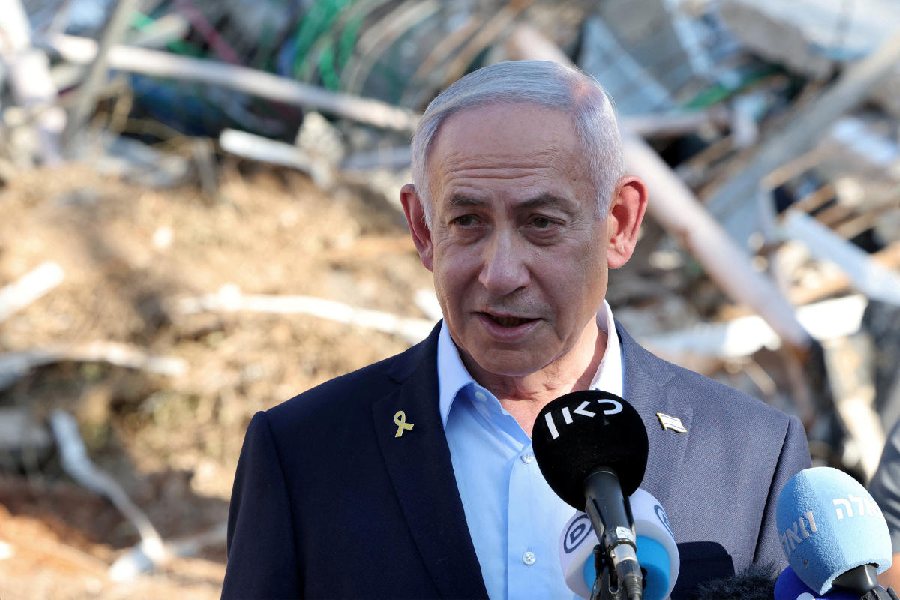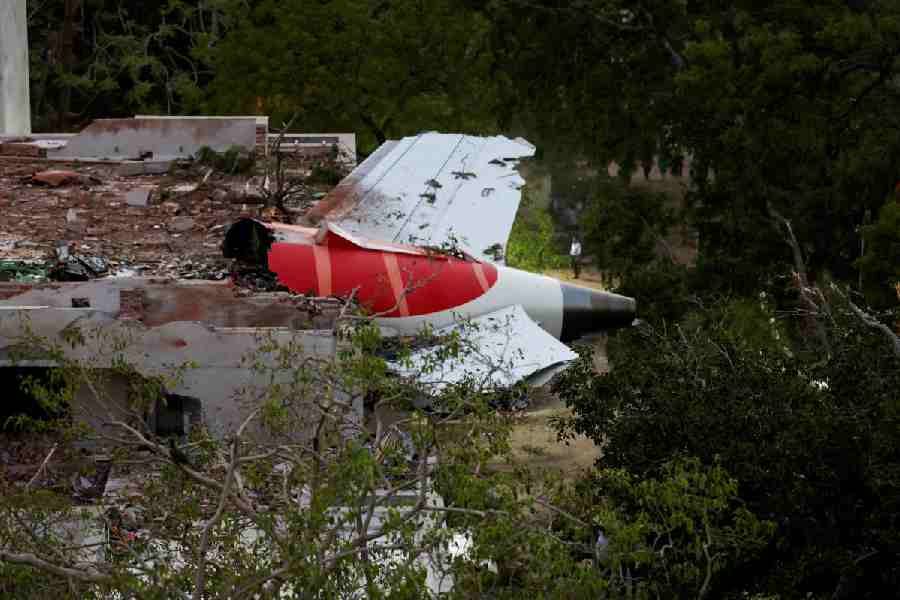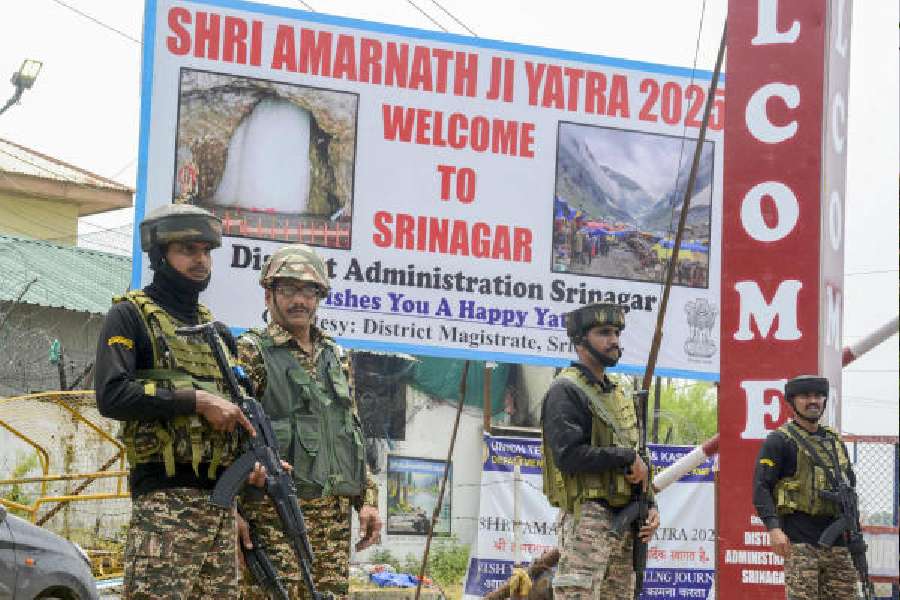 |
| Chinese soldiers at a memorial ceremony in Nanjing. File picture |
New Delhi, Dec. 16: “Hand-in-Hand” is so much better than “eyeball-to-eyeball”.
The diplomatese of Sino-Indian relations has just added a pair of new hyphenations to its lexicon. Not since “Hindi-Chini Bhai-Bhai” has such a thing been attempted.
“Hand-in-Hand” is the (rather unimaginative) name given to the first joint war game to be held by the Indian and Chinese armies. It follows games of ping-pong and volleyball that were played between the two armies on the border to build confidence over the last several years.
The English poet and rhymester Edward Lear used the current military catchphrase most famously in The Owl and the Pussycat. Celebrating that unlikely romance, he wrote: “...and hand-in-hand at the edge of the sand, they danced by the light of the moon, the moon, they danced by the light of the moon”.
Such an affair is not happening yet on the forbidding ridges and watersheds that demarcate so ambiguously the boundary between India and China. But the phrase must mean something. The Indian Army says it is going for a “joint exercise in counter-insurgency operations in mountainous terrain”. Piffle, really, but strong reason for good hope.
For decades, India’s often tense standoff with China on the disputed borders have come with the invariable description “eyeball-to-eyeball”. It conjured up visions of Indian and Chinese soldiers in icy, wind-blown heights such as in Nathu-la, Jhalep-la and Bumla, locking stares, standing to hair-trigger attention, bayonets drawn, ready to lay down lives for mother — and father — lands.
Otherwise, as happened in Sumdorong Chhu in Arunachal Pradesh in 1987, it could mean troops of either side rigging up loudspeakers over rickety poles and hollering at each other to lay down arms and pull back to depth areas.
Such is the literature of India-China military relations, framed in sepia-tinted photographs in Indian Army establishments across the frontier. When news of Indian troops relocating to original positions near the eastern frontier came out this week, the same fears reappeared. That is not to be, army officials in Delhi assert. Military moves now on will not be a throwback to yesteryears, they promise.
On Wednesday, as Indian troops go “over the hump” — a phrase from the second World War meaning the Himalayas in the Northeast — to Kunming in Yunnan province, it will be for the army drill “Exercise Hand-in-Hand”.
“China is on a charm offensive to be reassuring about its military,” said Ashley Tellis, a military analyst with think tank Rand Corporation and adviser to US diplomat Nicholas Burns. “The exercise with India is completely worthless at the tactical level but great outreach.”
The handshake across the “hump” is scheduled to take place despite unease in Delhi over Chinese troops’ forays into Bhutan. The holding of the drill in spite of the consternation on the border emphasises that military diplomacy is beginning to acquire an importance that few would have thought possible even a decade back.
Indian troops from the 27 Mountain Division — most of whom were not on counter-insurgency operations but on the Line of Control — are relocating from Kashmir to their original base closer to the China border in Sikkim. The inference many drew was that there was something hyper about the move. The relocation is happening over several weeks.
It has much to do with an assessment of the situation along the LoC in Jammu and Kashmir. According to that assessment, the army does not at this moment require the same force level on the LoC as it did last year.
This move has coincided with consternation that Chinese troops have made increased forays in Bhutan over the past year. Noticeable movement in the Dolam Plateau, south of the Sikkim-Bhutan-China trijunction, added a sense of urgency to the troops’ relocation but it was not the singular reason for the move.
“We are not creating a concentration of troops in response to Chinese moves,” an army official in Delhi took pains to explain. “They are simply returning to their original base.”










